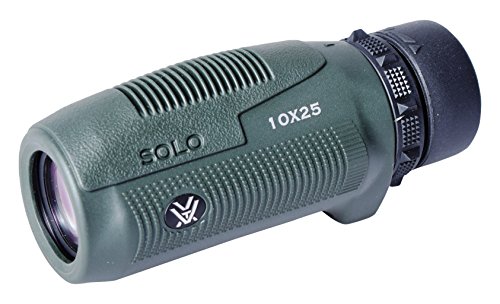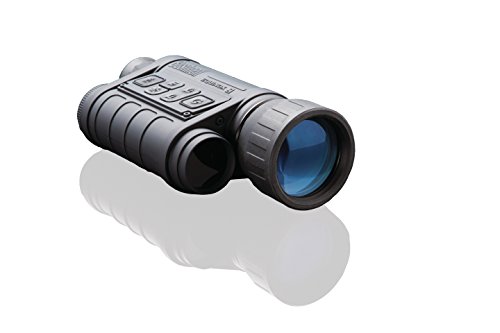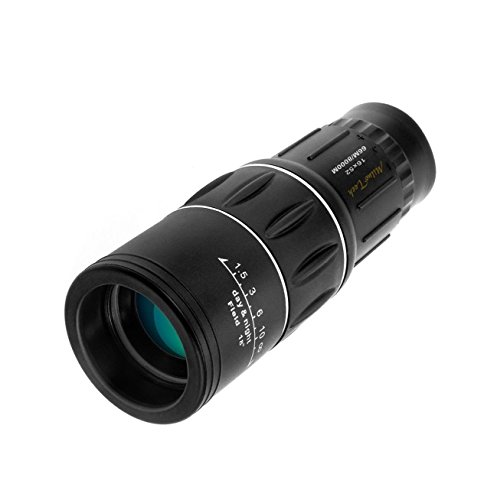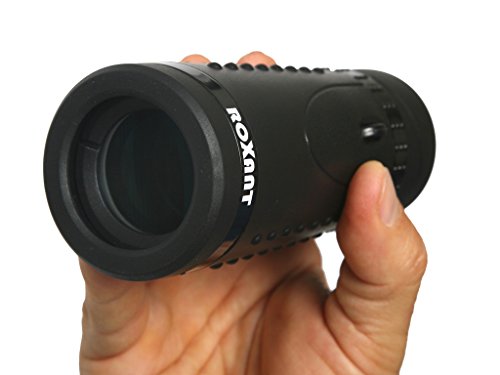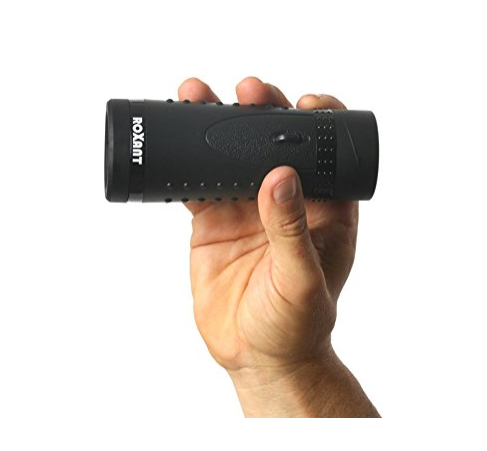
One of the golden rules of backpacking is to keep weight down and keep everything as compact as possible. So if you’re heading out and need to take some binoculars, you might consider a monocular instead.
Monoculars are often just as powerful as comparable binoculars for most recreational birders, wildlife enthusiasts, and nature lovers. So why not minimize the weight and bulk of your gear on your next backpacking or hiking trip?
More...
Among the added benefits of choosing a monocular is that they’re light enough and small enough to fit in side-pockets or accessory pouches. This is ideal for backpacking because you definitely don’t want heavy binoculars dragging your neck down all day. It’s also inconvenient to have to remove your pack to access your oculars. And there’s always the added benefit of monoculars being the cheaper choice. If you’re like me, then the price is important!
So, you’re ready to take a monocular on your next trip? Let’s talk in detail about what to look for, avoid, and how to choose. We’ll then review a few of the most popular monoculars on the market.
How to Choose the Best Backpacking Monocular
What makes a great monocular can depend on what you want to use it for. For simple landscape viewing, you may seek different qualities than a birder. Let’s take a look at features you should consider when purchasing a monocular.
Bulk and Weight
We can put these two criteria together for simplicity. If you want the short version – just keep the weight and bulk to an absolute minimum. Easy as that.
Of course, larger monoculars may be more appropriate for birders. If you want high-quality contrast and resolution, you’ll need to upgrade. Essentially you’ll want to err on the heavier side for day hiking, and lighter side for backpacking. No one wants to carry around any more weight than necessary on a long backpacking trip.
Depending on your budget, it is possible to find compact monoculars with great quality.
Magnification and Zoom
When picking out a monocular it’s critical to pay attention to zoom. Higher magnification means a smaller field of view. This would be ideal for those looking to zoom in on distant mountains. Small fields of view can be difficult when trying to locate near objects such as a bird, however.
Along with a narrow field of view, high power monoculars also can be hard to stabilize. Tiny movements of the hand or body when viewing through a high zoom lens can be unusably shaky. If you don’t have the most steady hands, then you might opt for a lower zoom power.
Understand Sizing
When looking for monoculars, you’ll come across size information like this: 8 x 25. If you don’t know what this means, then let’s break it down:
The first number, (8), refers to the magnification or power of the device. We talked about the implications of this above.
Second, (25), refers to the diameter of the lens in millimeters. Among other things, the lens diameter will dramatically affect gathered light. This can be problematic, though, at higher diameters. Because we’re searching for compact monoculars, a diameter of 30-35 is probably an absolute maximum. Don’t go too large on the lens or you’ll lose the compact advantage.
Eye Relief
This essentially measures how far the focal point of the lens is away from the monocular. An eye relief of 10mm means you’ll need to hold the monocular 10mm away from your eye.
For those with glasses, a larger eye relief might be ideal so that you can avoid banging the lens into your glasses to get a good view.
Now that we’ve talked in depth about features, let’s check out a few monoculars that fit the bill!
While 10x zoom might be a little on the high side, this compact monocular has what we’re looking for. The 25mm lens is small enough to be easily stored anywhere in your hiking backpack without added bulk.
This might be a monocular choice for those with rock-steady hands. On top of a great zoom profile, the lenses are fully multi-coated which affords greater clarity of image. It’s fog proof, waterproof, and shockproof. Of course, if you drop it lens-first onto a rock we suspect you’ll break it.
This one’s a bit different! There are tons of reasons to want a night vision capable monocular. Some that come to mind are game viewing, scouting, or just because it’s so cool!
Essentially, what this monocular does is function as a specialized digital camera with infrared emitters. You’ll need batteries and a bit of tech understanding to operate it but most users rate the nighttime view distance up to 900 feet. I recommend the 3x model as the other zoom levels will be prohibitively narrow.
In case you want to accessorize, it does include Picatinny rail mounts, tripod mounts, and video feeds out. Maybe the perfect gift for a hiker / tactical enthusiast.
While I’m not initiallly blown away by the overall build quality of this particular monocular, the overwhelming reviews and low price cannot be ignored.
With a 52mm objective lens (front lens), it’s exceeding what we might normally consider “compact”. However, the 16x zoom is perfect for users looking to get the absolute highest zoom possible. Remember, however, there are downsides to having heavy zoom power. I like how much adjustability they’ve packed into this budget-minded monocular.
The moderate 6x zoom and wide angle field of view make this a mid-distance reticle of choice. I like that they packaged it with all the accessories. For instance, you’ll get a neck strap, cleaning cloth, and a carrying pouch.
The all-glass lenses are fully multi-coated which, again, means less glare, reflection, and distortion. The exterior is molded with textured bumps for increased grip. They’ve also added an eye cup which can be retracted for users with or without glasses. Monocular and case together weigh in at a reasonable 6.4 ounces according to one user which makes it a great lightweight choice for backpacking.
Overall, the ROXANT Grip Scope is small and light enough for backpacking. It’s powerful and robust enough to be a fully featured monocular for most users. This one gets a strong thumbs-up!
Okay, we realize the price tag may give some people sticker shock ($440 ain’t cheap!). However, stick with us while we explain why this little monocular commands such a high price.
Leica is known for producing seriously top-quality viewing equipment. Why? They take extra steps such as fully sealed barrels filled with nitrogen. That means the inside of your monocular is filled with an inert gas. This eliminates distortion, blur, and clarity issues. They’ve also gone several steps beyond with their lens coatings which are water and dirt repellent.
Wrapping it up…
Monoculars aren’t usually seen as a must-have item by backpackers.
But considering that they can weigh much less than a pair of binoculars, the five items covered above are certainly worthy tools to help you admire the outdoors. The trick is to educate yourself about what type of monocular you really need — and then make the best decision.

